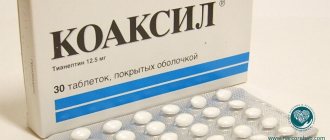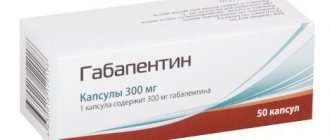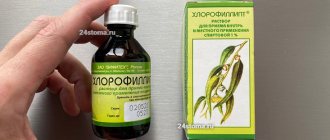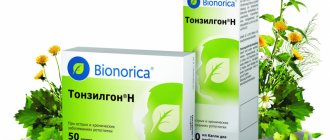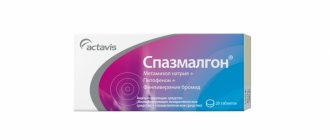Cough syrups are often used by drug addicts as stimulants. Pharmacy drugs have been gaining popularity over the past few years.
More and more people are using the over-the-counter sale of narcotic drugs in pharmacies to achieve a state of drug intoxication.
What some people use as medicine , for others it is a way of obtaining pleasure and changing consciousness.
Release form and composition
Glycodin is produced in the form of a syrup: thick, viscous, from dark yellow with a brownish tint to yellow, opalescent, with a characteristic odor (50 or 100 ml in dark glass bottles, complete with a measuring cap or spoon, 1 set in a cardboard pack).
5 ml of syrup contains the following active ingredients:
- Dextromethorphan hydrobromide – 10 mg;
- Levomenthol – 3.75 mg;
- Terpine hydrate – 10 mg.
Auxiliary components in the composition of Glycodin: alem (BBA) – 0.0165 ml; sucrose – 3250 mg; sodium methyl parahydroxybenzoate – 5.5 mg; caramel – 65 mg; sodium propyl parahydroxybenzoate – 2.75 mg; sodium saccharinate – 10 mg; glycerol – 600 mg; citric acid monohydrate – 0.85 mg; propylene glycol – 400 mg; purified silicon and distilled water - in sufficient quantity to achieve the required volume.
Consequences of using Glycodin
When using Glycodin in the wrong dosage, a person experiences a euphoric state, a surge of energy and strength, and increased performance.
This is due to the stimulating effect of Glycodin on the central nervous system. If consumed in large quantities, hallucinations and delusions may occur.
Pharmacological properties
Pharmacodynamics
Dextromethorphan is an antitussive drug similar in potency to codeine. It increases the sensitivity threshold of the cough center located in the medulla oblongata, helps suppress cough of any etiology, eliminates dry non-productive cough and is well tolerated by patients of any age. Dextromethorphan has some sedative effect, but is not characterized by hypnotic, narcotic or analgesic effects. It does not reduce the activity of the ciliated epithelium and does not have a depressing effect on the respiratory center. The substance begins to act 10–30 minutes after oral administration, and the duration of exposure is 5–6 hours in adults and 6–9 hours in children.
Terpin hydrate has an expectorant effect, improves the secretory function of the epithelial glands of the respiratory tract, increases the volume of secretion and reduces the viscosity of the secreted secretion, protects the inflamed surface of the epithelium of the respiratory tract from direct contact with the external environment, which accelerates regeneration processes in the epithelium.
Levomenthol is characterized by a moderate antispasmodic effect and alleviates symptoms of bronchitis, laryngitis, pharyngitis and acute rhinitis.
Pharmacokinetics
After oral administration, dextromethorphan is completely absorbed from the gastrointestinal tract and participates in metabolic processes in the liver. The maximum concentration of the substance in the blood plasma is achieved 2 hours after administration. Up to 45% of dextromethorphan is excreted in the urine.
Terpene hydrate is absorbed quite quickly from the gastrointestinal tract after oral administration. Part of the active substance circulates in the blood unchanged and is excreted in exhaled air, as well as in sweat and urine, giving them a special, specific odor. The remainder of the terpin hydrate participates in oxidation processes in the body and is excreted in the urine in the form of phenols.
Levomenthol is excreted in bile and urine as a glucuronide.
Glycodin use
Since Glycodin is sold in the form of syrup , it can be drunk pure or diluted with other drinks. It is especially dangerous to mix Glycodin with other drugs or alcohol.
The use of Glycodin poses a danger to the body and psyche due to its effect on the central nervous system. The effect of Glycodin lasts for several hours, after which the person has a desire to use a new portion of the drug.
special instructions
Patients with diabetes when taking Glycodin should take into account that the syrup contains 3250 mg of sucrose, which is less than 1 bread unit (XU).
During therapy, addiction does not develop.
Terpene hydrate, which is part of Glycodin, can give sweat and urine a specific odor, which has no clinical significance.
During the period of taking the drug, patients should be careful when driving vehicles and when performing potentially dangerous types of work that require high concentration and rapid psychomotor reactions.
Where is Glycodin used?
Glycodin is a medical drug that has an expectorant and antitussive effect and is prescribed by doctors to treat colds.
- Glycodin contains Terpinhydrate , which has an expectorant effect due to the fact that it dilutes sputum.
- Levomenthol and its antispasmodic effect helps improve a person’s condition in inflammatory diseases. Glycodin also has a sedative effect.
Reviews about Glycodine
According to reviews, Glycodin has proven itself in the treatment of dry cough. Most patients experience significant improvement even after a single dose of the drug. At the same time, it remains affordable and begins to act quite quickly, however, some patients mention side effects, among which the most common are drowsiness and allergic reactions.
Sometimes there are opinions that Glycodin supposedly has a narcotic effect. However, they are wrong: the drug does not cause a state of euphoria and addiction. When taking too large a dose of the drug, only pronounced side reactions such as skin itching can be observed.
Glycodin effect
The stimulating effect of Glycodin is similar to other drugs of the psychostimulant group - amphetamine, cocaine, salt. The first thing a drug addict experiences after consuming cough syrup is excitement and euphoria.
But when the effect of the drug wears off , depression appears, as well as a desire to experience pleasure again. Soon, to achieve a state of drug intoxication, a person is forced to use Glycodin in large quantities, and this increases the risk of overdose.
Glycodin addiction
Glycodin is addictive . Pharmacy drugs are addictive, and Glykod is no exception. To treat Glycodin addiction, you need to seek help from a doctor.
In case of an overdose of Glycodin, first of all you should call an ambulance. The narcologist will perform gastric lavage or prescribe symptomatic treatment. Gastric lavage is the first aid to remove toxic substances from the body.
Symptomatic treatment will help get rid of the consequences of using Glycodin. In some cases, doctors use an antidote - an antidote.
Consequences of taking Glycodin
Young people easily become addicted to this drug and fall into the bonds of addiction. The drug is not that difficult to obtain and the high is similar to illegal drugs. Due to the stimulation of the central nervous system, the recipient experiences a state of euphoria and his stamina increases. From large dosages, the addict experiences hallucinogenic delusions. This is due to dextromethorphan, which is part of the drug.
In case of an overdose of the drug, the following symptoms develop: respiratory depression, increased heart rate, dyspeptic disorders, apathy and psychomotor agitation. A person who exceeds the dose of Glycodin experiences severe drowsiness, dizziness, and lethargy. A rash or swelling, and allergic skin reactions may occur.
Consequences of taking
Unfortunately, people often become dependent on Glycodin. Finding pharmaceuticals is not that difficult. After taking it in non-therapeutic doses, a person experiences narcotic intoxication, which was previously achieved when taking prohibited substances.
After using the medication, the central nervous system is stimulated, the addict experiences a feeling of bliss, plus endurance increases.
When taking the medication in large dosages, a person experiences hallucinations and delusions. This is achieved due to dextromethorphan, which is among the components of the medicine.
Treatment of Glycodin Addiction
Treatment of addiction to pharmaceutical drugs is a long process of rehabilitation and restoration of a person’s mental and physical condition. Dr. Vasilenko’s medical center uses unique techniques to treat Glycodin addiction.
A team of doctors: narcologists, psychologists, psychiatrists will conduct a series of examinations to diagnose the person’s condition and select effective methods of treating drug addiction .
Author:
Vitaly Ivanovich Vasilenko
Overdose
Overdose symptoms
- Psychomotor agitation
- Dyspeptic disorders
- Rapid pulse
- Respiratory depression
- Apathy
- Lethargy
- Dizziness
- Strong desire to sleep
- Allergy
- Edema
- Rash
It is not necessary that all these symptoms will occur during an overdose.
If you notice signs of an overdose, it is important to call an ambulance. Doctors will rinse the patient’s stomach, carry out symptomatic treatment, and use an antidote (antidote).
The life of the victim can be saved precisely thanks to the gastric lavage procedure. Symptomatic therapy will help relieve symptoms of other concomitant disorders.
Directions for use and dosage
| Patient age | Dosage | Number of doses per day |
| Children from 1 year to years | At the discretion of the doctor | At the discretion of the doctor |
| From 4 to 6 years | ¼ spoon | 3 or 4 times |
| From 7 to 12 years | 1/2 spoons | 3-4 times |
| Adults | 1 teaspoon | 3-4 times |
The medicine begins to act 10-30 minutes after ingestion. The duration of the therapeutic effect is from 5 to 6 hours in adults, 6-9 hours in children.
Note!
Description of the drug Glycodin syrup fl. 100ml on this page is a simplified author’s version of the apteka911 website, created on the basis of the instructions for use.
Before purchasing or using the drug, you should consult your doctor and read the manufacturer's original instructions (attached to each package of the drug). Information about the drug is provided for informational purposes only and should not be used as a guide to self-medication. Only a doctor can decide to prescribe the drug, as well as determine the dose and methods of its use.
Glycodin overdose
In case of an overdose, a person’s breathing slows down and the pulse increases, arrhythmia, apathy, and hyperexcitation on the verge of psychosis .
The opposite effect of Glycodin is nausea and vomiting, headache, fatigue, and drowsiness. In case of overdose, an allergic reaction may occur in the form of a skin rash or swelling.
Interactions
There was no significant interaction of dextromethorphan, which is part of the drug, with other drugs, except for the synergistic interaction with narcotic antitussives and other drugs that suppress the function of the central nervous system.
The use of the drug with MAO inhibitors, furazolidone, procarbazine, selegiline is contraindicated. Amiodarone, haloperidol, propafenone, fluoxetine, quinidine, by inhibiting the cytochrome P450 system, can increase the concentration of dextromethorphan in the blood. Tobacco smoke can lead to increased secretion of glands while suppressing the cough reflex.
